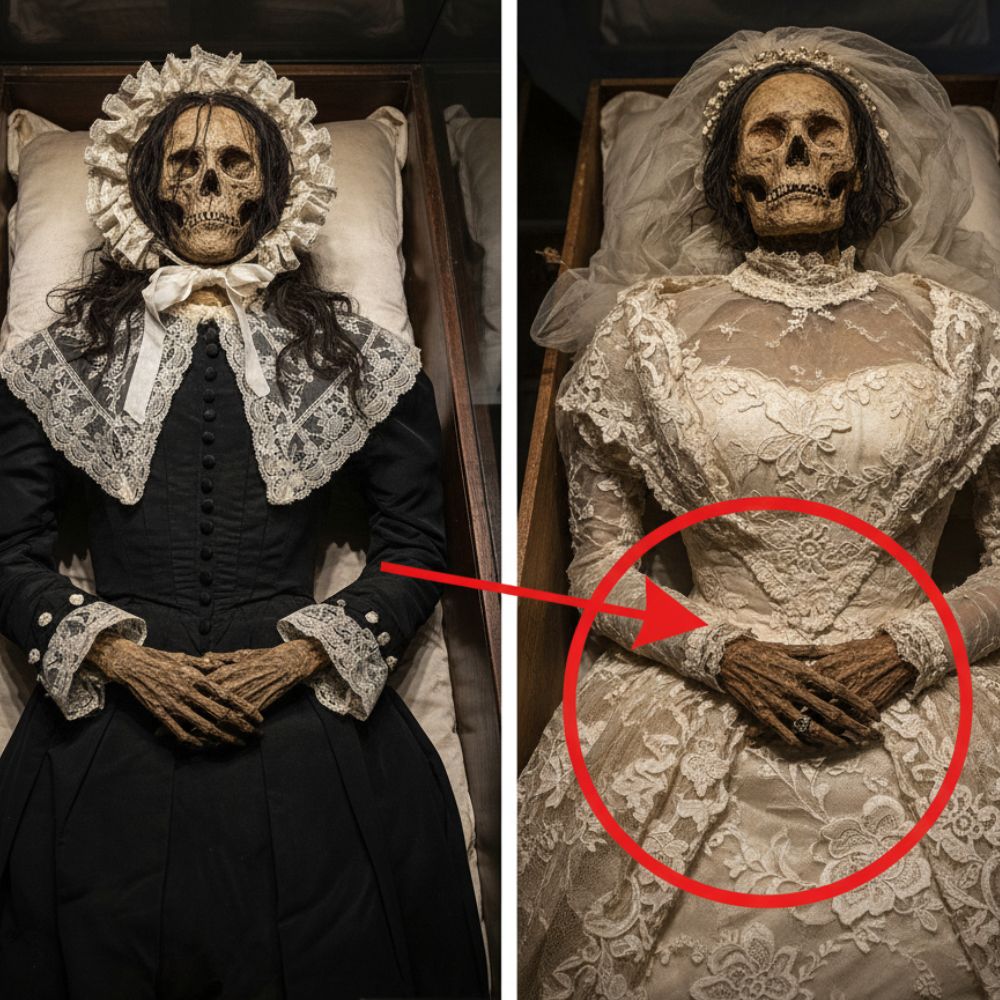The Bridal Mummies of Guanajuato: A Glimpse into Post-Mortem Preservation

The year was 1865, and the sun beat down relentlessly on the parched earth of Guanajuato, Mexico. A mining boom was transforming the city, but beneath the surface, a different kind of discovery was being made. Due to the unique mineral-rich soil and dry conditions in certain cemeteries, bodies were not decaying as expected. Instead, many were undergoing a natural mummification process, turning graves into accidental time capsules.
One such discovery, around the turn of the 20th century during cemetery exhumations, brought to light a particularly poignant pair. They were not pharaohs or ancient rulers, but ordinary people, whose remains told a silent story of life and an unexpected afterlife.
Among the collection that would later form the heart of the Museo de las Momias de Guanajuato, two figures stood out. The first, exhumed from a plot likely belonging to a family of modest means, was initially dubbed “La Dama de Negro” – The Lady in Black. Her naturally mummified form, surprisingly intact, suggested she was interred in a somber, yet formal, black dress with intricate white lace details, perhaps her finest, if not her wedding gown, then certainly a significant garment. Her head was adorned with a simple, frilly bonnet, a common accessory of the mid-19th century. Her features, though desiccated, held an arresting stillness, a testament to the unforgiving embrace of the Guanajuato earth.
Then there was the “Novia Blanca” – The White Bride. Her discovery was even more striking. Unlike the stark simplicity of the Lady in Black, the Novia Blanca lay in a delicate, cream-colored lace bridal gown, its intricate patterns still discernible despite the passage of decades. A thin, delicate veil, now brittle with age, partially covered her mummified skull. What truly captured the imagination of onlookers, however, were her hands, clasped gently over her chest. On one finger, a slender ring, perhaps her wedding band, remained steadfast, a tiny, glittering promise unbroken by death. Archaeologists and historians studying the collection theorized she might have died shortly after her wedding or perhaps was buried in her most cherished attire, symbolic of eternal love.
These two mummies, though separated by the circumstances of their individual lives, became iconic representations of Guanajuato’s unique geological phenomenon. They were not embalmed by human hands, but preserved by the very soil they returned to. Their clothing, an unintentional timestamp, offered invaluable insights into regional fashion and funerary practices of 19th-century Mexico.
Today, as visitors peer into their glass enclosures at the museum, they are not merely observing macabre exhibits. They are witnessing an extraordinary intersection of geology, history, and human emotion. The Bridal Mummies of Guanajuato stand as silent, yet eloquent, witnesses to lives lived, loves perhaps lost, and the enduring power of accidental preservation, reminding us that even in death, stories can be unexpectedly brought to light.
